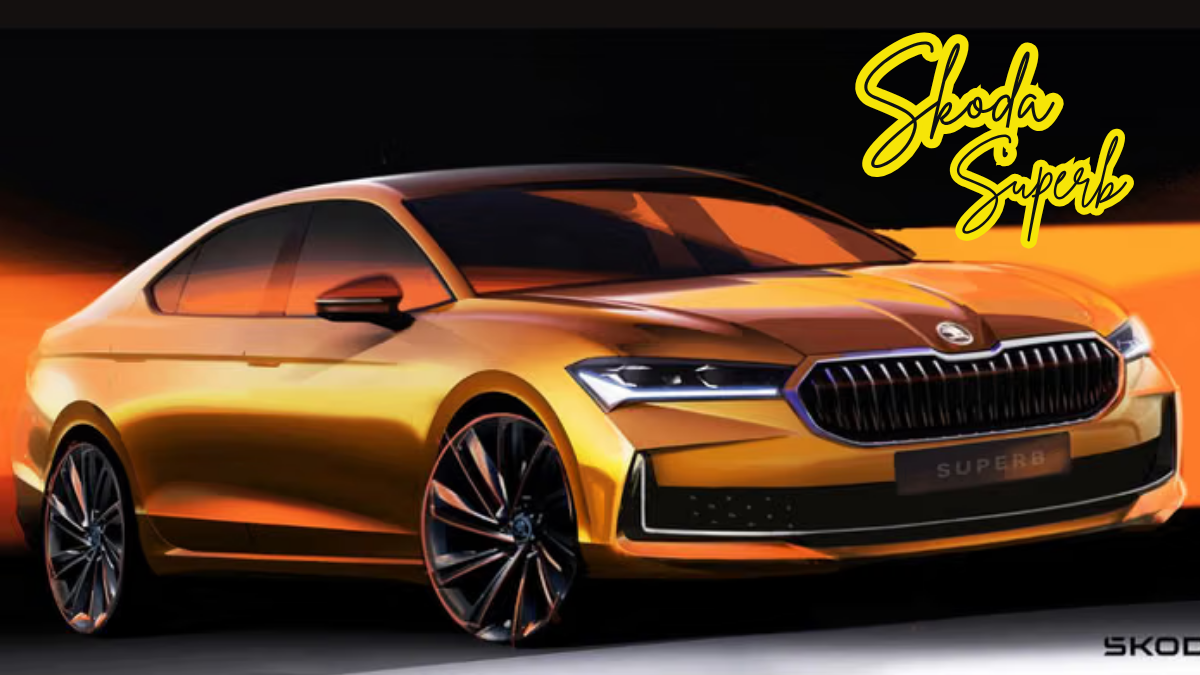Skoda’s flagship sedan has always been known for long legged cruising and real world efficiency. The latest feat lifts that reputation to a new level. Using a mostly stock Superb diesel, rally driver Miko Marczyk drove 2,831 km on a single tank and secured a Guinness World Record for the greatest distance driven on one tank of fuel. What makes the achievement compelling is how close the car remained to showroom specification and how methodical the approach was in both preparation and driving style.
The Record And Why It Matters
The benchmark here is distance on a single fill. The Superb diesel posted an average consumption of 2.61 L per 100 km which translates to roughly 90 mpg or 38 kmpl. That is significantly more efficient than the model’s official combined figure of about 4.8 L per 100 km which is roughly 49 mpg or 20 kmpl. On one stretch in France with a helpful tailwind, the economy climbed even higher to an estimated 107 mpg or 45 kmpl. The result shows what can be unlocked when aerodynamics, rolling resistance, pace discipline, and a smooth torque rich diesel powertrain are aligned.
Quick Summary
Item |
Details |
|---|---|
Record |
Greatest distance driven on a single tank of fuel |
Distance achieved |
2,831 km on one tank |
Driver |
Miko Marczyk, 2025 European Rally Championship winner |
Car used |
Personal Skoda Superb diesel, essentially stock |
Average economy |
2.61 L per 100 km, about 90 mpg or 38 kmpl |
Best stretch |
With tailwind, up to about 107 mpg or 45 kmpl |
Fuel tank |
Stock 66 litre diesel tank |
Key tweaks |
Low rolling resistance tyres, Sportline springs lowering ride height by 15 mm |
Route snapshot |
Łódź to Germany to Paris to Netherlands to Belgium and back via Germany |
Conditions |
Cold weather, down to 1°C, steady 80 kmph cruise on regular diesel |
Official site |
The Car: Essentially Stock, Optimised For Efficiency
A key point is that the record car was Marczyk’s own Superb diesel rather than a factory prepared prototype. The mechanical package remained stock. The engine, transmission, fuel tank, and control software were unchanged. Two targeted tweaks helped reduce energy losses.
- Low rolling resistance tyres reduced the energy needed to keep the car moving at a steady speed.
- Sportline suspension springs lowered the ride height by 15 mm, trimming frontal area and underbody airflow turbulence for slightly better aero.
Beyond these, the car ran its standard 66 litre tank and retained daily comfort and convenience features. The kerb weight of about 1,590 kg and the fitment of 16 inch alloys also played a role by keeping rotational mass and aero drag in check.
Route, Pace, And Weather
The route started in Łódź, Poland, continued across Germany, passed through Paris in France, crossed into the Netherlands and Belgium, then returned through Germany. Total distance was measured at 2,831 km. Temperatures were cold and dropped to around 1°C at times. Cold air increases density which can slightly raise aerodynamic drag, but it can also improve engine efficiency and intercooler effectiveness. The team chose an average cruising speed of about 80 kmph to sit in the sweet spot where aero drag is manageable while engine load remains efficient. Regular diesel was used for the run. Marczyk later noted plans for a future attempt targeting 3,000 km using premium diesel and an even more carefully optimised route.
Why The Numbers Look So Strong
Several factors compound to deliver the headline economy.
- Steady state cruising limits energy lost to acceleration and braking.
- Diesel thermal efficiency is generally higher than comparable petrol engines at light loads.
- Lower ride height reduces drag at highway speeds.
- Low rolling resistance tyres cut hysteresis losses within the tyre carcass.
- Driver discipline in throttle application, anticipation, and momentum preservation keeps the powertrain operating near its most efficient zones.
Together, these create an outcome that exceeds official combined ratings which include urban cycles, higher speeds, and stop go segments.
India Relevance And Powertrain Snapshot
A Superb diesel has been spotted testing in India recently, igniting interest in a potential reintroduction of diesel for long distance users. The record setting car uses a 2.0 litre TDI engine rated at about 148 bhp and 360 Nm paired to a 7 speed DSG and front wheel drive. In practical Indian use, owners should focus on consistent speeds, tyre health, and clean airflow to approach strong highway efficiency. Even if you never chase a record, the principles behind this run can stretch range between fills on intercity trips.
Five Driving Tips From The Record Run
Miko Marczyk summarised his approach with five concise practices that any driver can adopt.
- Maintain correct tyre pressures at all times.
- Drive only when well rested to stay smooth and alert.
- Anticipate traffic flow and minimise unnecessary braking to preserve momentum.
- Use gradual acceleration and Eco mode where available to keep the engine in efficient load zones.
- Use natural conditions when safe, such as planning with favourable wind directions and avoiding heavy headwinds where possible.
These do not require special hardware. They reward patience, planning, and a light right foot.
How You Can Apply This On Your Next Road Trip
- Plan routes with fewer stoplights and smoother traffic patterns.
- Fill at reliable stations and reset your trip computer to monitor consumption.
- Remove roof racks or external carriers when not needed to cut drag.
- Pack light and keep the boot tidy to reduce weight.
- Keep windows closed at highway speeds and rely on the ventilation system to avoid aero penalties.
- Service the car on schedule so that filters, fluids, and alignment are in optimal condition.
Real world gains of 10 to 20 percent are often possible for many drivers simply by adopting these habits.
Frequently Asked Questions
1) Was the record car modified
Only minimally. It ran low rolling resistance tyres and Sportline springs that lowered ride height by 15 mm. Engine, gearbox, and fuel tank were stock.
2) What cruising speed did the driver maintain
About 80 kmph on average, chosen to balance low aerodynamic drag with efficient engine loading.
3) What fuel economy did the Superb achieve
An average of 2.61 L per 100 km which is about 90 mpg or 38 kmpl, with a best stretch around 107 mpg or 45 kmpl aided by a tailwind.
4) How big is the fuel tank on the Superb diesel
It is the standard 66 litre tank. No auxiliary tanks or changes were used.
5) Can regular drivers replicate similar results
You may not match the exact record, but by maintaining tyres, driving smoothly, planning routes, using Eco modes, and keeping speed steady, you can achieve meaningful improvements in your own car’s highway efficiency.
Conclusion
The Guinness World Record run highlights what the Skoda Superb diesel can achieve when every detail favours efficiency. The car stayed close to showroom specification, the route was long but sensible, and the driving technique was measured rather than extreme. For long distance users, the lesson is clear. With a well maintained diesel powertrain, careful preparation, and disciplined cruising, range anxiety is replaced by relaxed confidence. Whether Skoda brings this exact diesel configuration back to India or not, the principles demonstrated by the record will continue to inform how buyers think about highway economy and practical touring.
Official Website
https://www.skoda-auto.co.in
For More Information Click HERE






